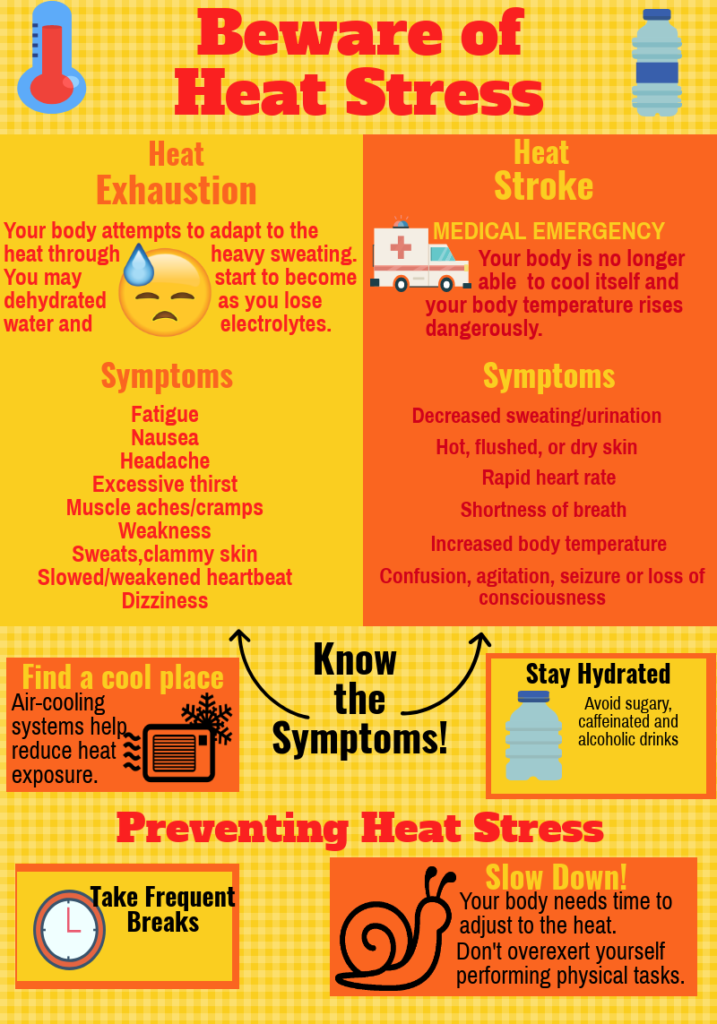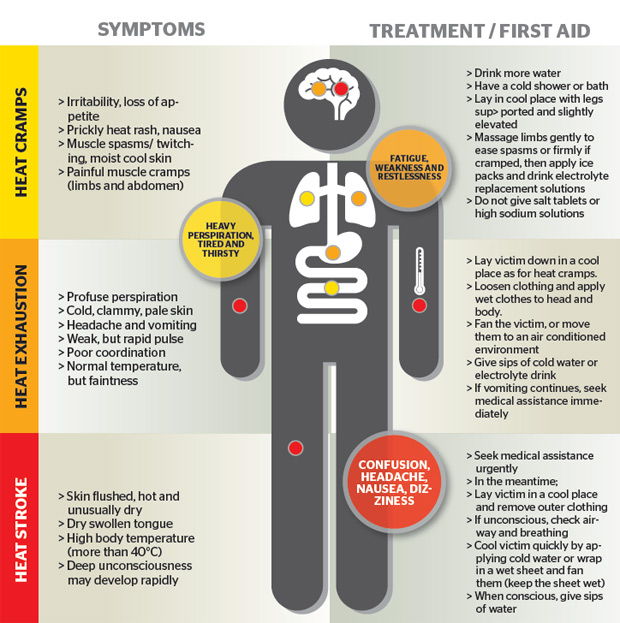Can You Recognise and Treat Heat Stress at Work?
Heat stress is a major threat to many workers, especially those who work outside in the summer months. But do not forget that heat stress at work is a threat all year round. Those who work in factories and bakeries are vulnerable to heat-related illnesses, no matter what the season.
To operate safely as a business, you and your employees must know about it. Here is everything you need to know about heat stress and how you can protect your workforce.
- Page Contents
- What is Heat Stress?
- Who is Affected by Heat Stress?
- Symptoms of Heat Stress
- How to Protect Your Workforce from Heat Stress
- How Workers Can Stay Safe
What is Heat Stress?
Heat stress is where the body is under stress from overheating. It can cause illnesses such as cramps, exhaustion, a rash, and/or stroke. These illnesses come with their own symptoms and treatment. The different symptoms can range from profuse sweating to dizziness and fainting.
Who is Affected by Heat Stress?
Certain factors and behaviours can put people at greater risk of suffering from heat stress at work. These include:
Age - the older you are the easier you find that you will suffer.
Medical conditions - heart, lung or kidney issues, diabetes and others on medication are susceptible to heat stress.
Diet pills, sedative and caffeinated drinks.
Strenuous and/or prolonged physical activity - avoid this by kitting your team in appropriate protective work gear.
Symptoms of Heat Stress
Victims often overlook signs of heat stress. Be sure to watch out for the following symptoms:
- Confusion or unable to concentrate
- Dizziness
- Dehydration
- Cramps
- Profuse
- Sweating
- Vomiting
- Fainting or collapsing
How to Protect Your Workforce from Heat Stress
There are various ways in which you can protect your team from the dangers of heat stress at work. These include:
- Allow time for your employees to adjust to the temperature - this takes around two to three weeks.
- Revise your work schedule - assign physical tasks during the cooler part of the day (1pm-3pm)
- Reduce your workload - introduce more equipment
- A clear schedule for breaks which must be abided by
- Train your staff about heat stress - what it is, the dangers and how to recognise symptoms.
- Avoid placing high-risk employees in hot working environments for a long period
- Designate a worker to monitor conditions
How Workers Can Stay Safe
Whilst it is important you put guidelines in place to look after your workers, it is important that they take the following actions to protect from heat stress at work:
- Training to recognise the symptoms of heat stress
- Equipment for ventilation and cooling
- Appropriate PPE - such as work shorts
- Wear light clothing
- Keep your body shaded - such as wear hats
- Drink plenty of fluids
- Regular shaded breaks
Conclusion
Heat stress needs to be taken seriously because it can affect all employees who work outside in warmer months. Because you are their employer, it is important that you understand what heat stress is and who it affects. Knowing this will help you advise your workers on how they can stay safe and hot to spot the symptoms.
As well as doing this, it is also your responsibility to protect your workers. There are several ways you can do this, such as changing their work schedule or reducing their workload.








